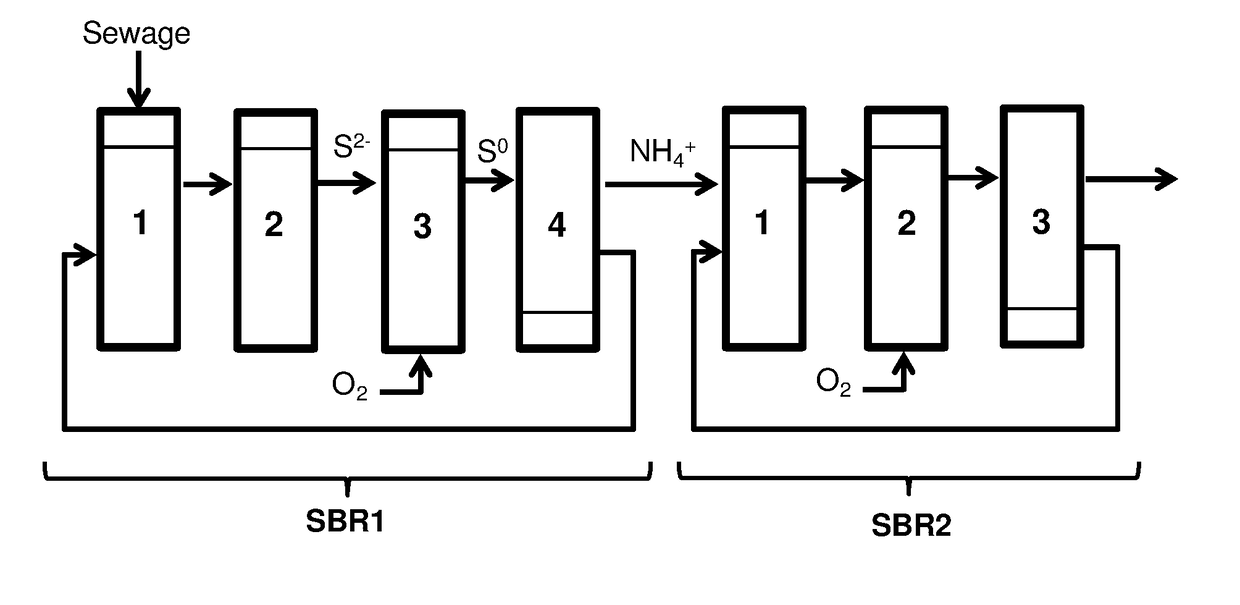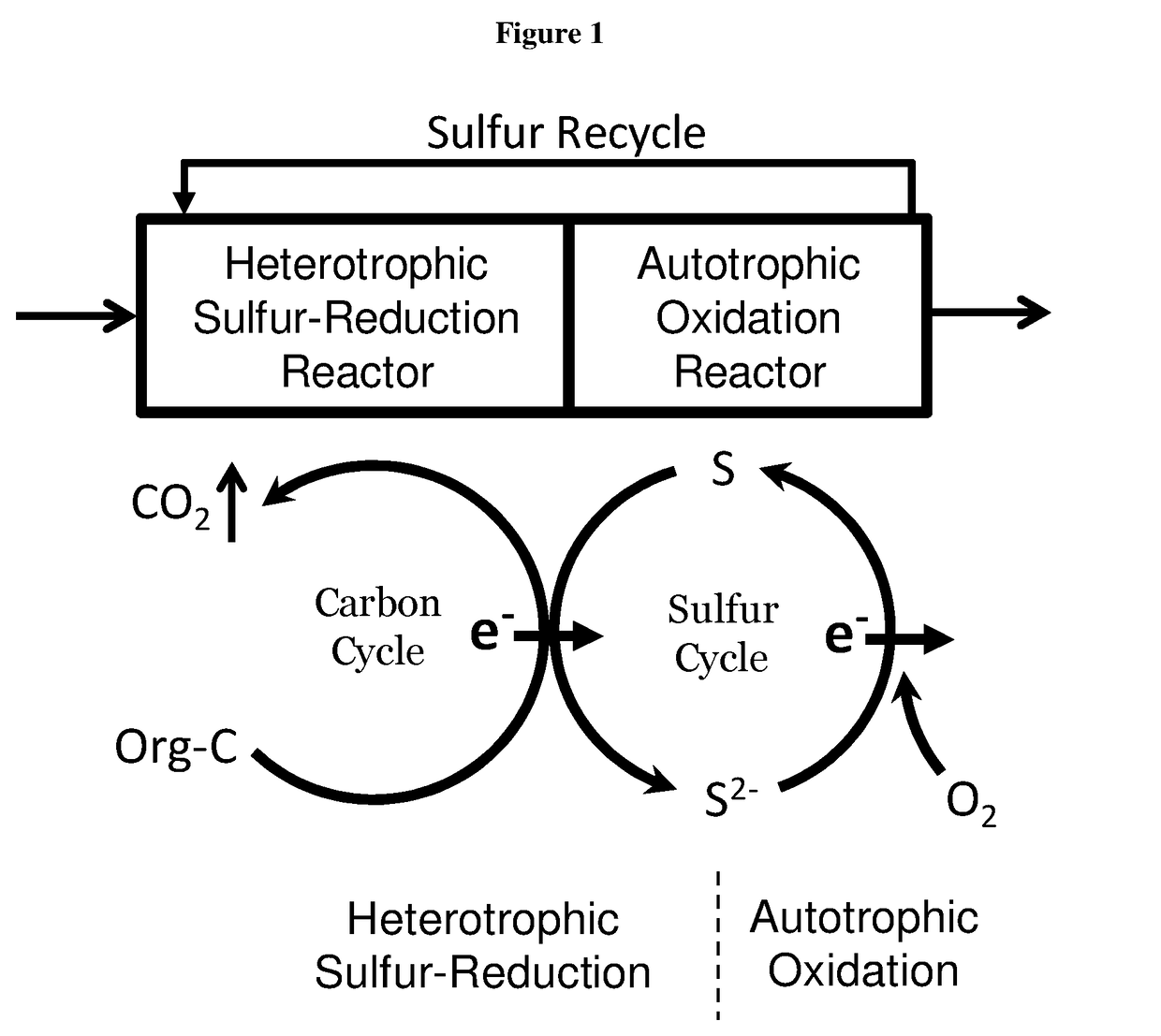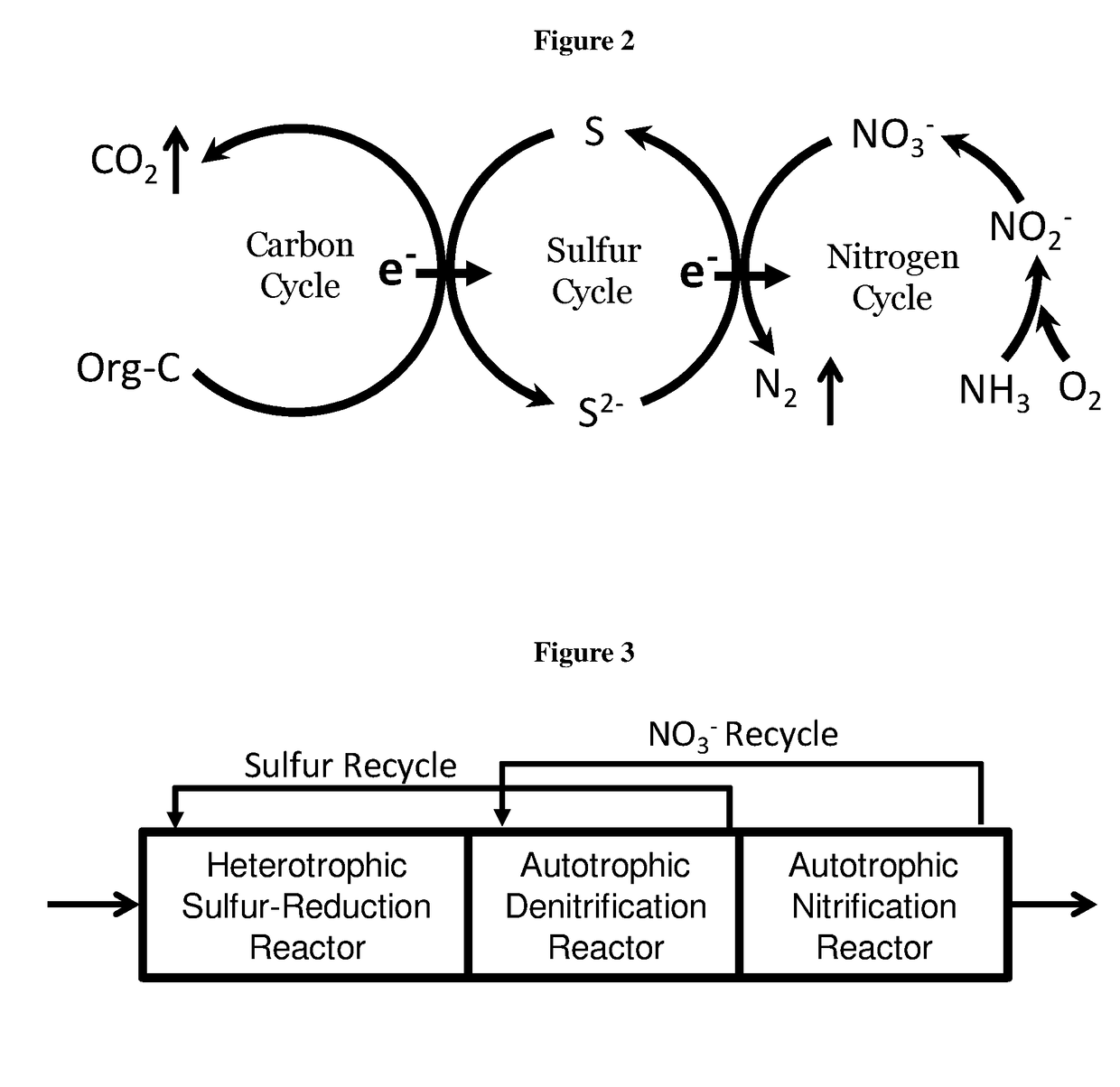Internal sulfur cycling sani (isc-sani) process for biological wastewater treatment
a biological wastewater and sulfur cycle technology, applied in biological water/sewage treatment, sustainable biological treatment, water treatment parameter control, etc., can solve the problems of sludge disposal up to 50% of sewage treatment cost, high volume sewage treatment, energy consumption, etc., and achieve the effect of reducing elemental sulfur to sulfid
- Summary
- Abstract
- Description
- Claims
- Application Information
AI Technical Summary
Benefits of technology
Problems solved by technology
Method used
Image
Examples
example 1
Process
[0054]FIG. 13 shows the operation of the ISC-SANI process in the mode of an SBR. The set up involves two separate SBRs, with details shown below:
[0055]SBR1: 1) SBR1 will be filled with sewage. If needed, sulfur compounds will be added to replenish any loss of sulfur in the effluent. Sulfur compounds in any forms, such as SO42−, SO32−, S2O32−, S0, or S2−, can be used to satisfy the sulfur loss in the effluent; 2) The SBR will be operated in the anaerobic mode. Organic carbon is oxidized to CO2 while the recycled elemental sulfur (S0) and the added sulfur compounds will be reduced to sulfide; 3) The SBR1 will be operated in the anoxic mode. Effluent from SBR2 will be recycled to provide the nitrate for autotrophic denitrification. An ORP controller controls the recycle ratio from SBR2 to SBR1 to maintain the ORP in SBR1 within −360 mv to −420 mv The oxidation from S2− to S0 is controlled by means of carefully controlling the recycle ratios and close monitoring of the ORP of the...
example 2
d ISC-SANI Process
[0057]FIG. 14 shows the operation of the simplified ISC-SANI process in the mode of an SBR. The set up involves two separate SBRs with similar operation as in the ISC-SANI process, with details shown below:
[0058]SBR1: 1) SBR1 will be filled with sewage. If needed, sulfur compounds will be added to replace any loss of sulfur in the effluent. Sulfur compounds in any forms, such as SO42−, SO32−, S2O32−, S0, or S2−, can be used to satisfy the sulfur loss in the effluent; 2) The SBR will be operated in the anaerobic mode. Organic carbon is oxidized to CO2 while the recycled elemental sulfur (S0) and the added sulfur compounds will be reduced to sulfide; 3) The SBR1 will be operated in the aerobic mode. A small amount of oxygen will be provided to the reactor enable complete conversion of the sulfide to elemental sulfur. The oxidation from S2− to S0 is carefully controlled by close monitoring of the ORP of the reactor; and 4) The SBR1 will be allowed to settle and decant...
PUM
| Property | Measurement | Unit |
|---|---|---|
| oxidation reduction potential | aaaaa | aaaaa |
| volume | aaaaa | aaaaa |
| organic | aaaaa | aaaaa |
Abstract
Description
Claims
Application Information
 Login to View More
Login to View More - R&D
- Intellectual Property
- Life Sciences
- Materials
- Tech Scout
- Unparalleled Data Quality
- Higher Quality Content
- 60% Fewer Hallucinations
Browse by: Latest US Patents, China's latest patents, Technical Efficacy Thesaurus, Application Domain, Technology Topic, Popular Technical Reports.
© 2025 PatSnap. All rights reserved.Legal|Privacy policy|Modern Slavery Act Transparency Statement|Sitemap|About US| Contact US: help@patsnap.com



